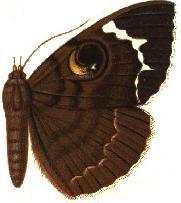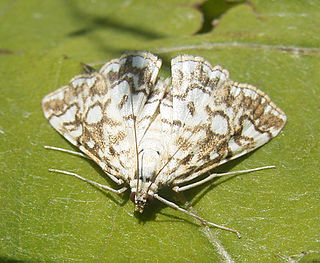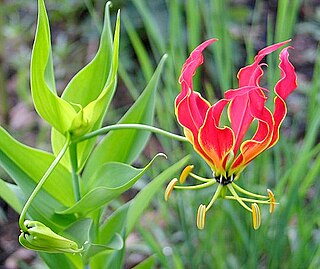
Mount Erebus is the second-highest volcano in Antarctica and the southernmost active volcano on Earth. It is the sixth-highest ultra mountain on the continent. With a summit elevation of 3,794 metres (12,448 ft), it is located in the Ross Dependency on Ross Island, which is also home to three inactive volcanoes: Mount Terror, Mount Bird, and Mount Terra Nova.

HMS Erebus is a Hecla-class bomb vessel constructed by the Royal Navy in Pembroke dockyard, Wales, in 1826. The vessel was the second in the Royal Navy named after Erebus, the dark region of Hades in Greek mythology.

HMS Terror was a specialized warship and a newly developed bomb vessel constructed for the Royal Navy in 1813. She participated in several battles of the War of 1812, including the Battle of Baltimore with the bombardment of Fort McHenry. She was converted into a polar exploration ship two decades later, and participated in George Back's Arctic expedition of 1836–1837, the successful Ross expedition to the Antarctic of 1839 to 1843, and Sir John Franklin's ill-fated attempt to force the Northwest Passage in 1845, during which she was lost with all hands along with HMS Erebus.

Thomas Law McMillan, nicknamed Rebel, was an American professional baseball shortstop. He played five seasons in Major League Baseball (MLB) from 1908 to 1912 for the Brooklyn Superbas, Cincinnati Reds, and New York Highlanders. He is an alumnus of Georgia Institute of Technology.

The hybrid elm cultivar Ulmus × hollandica 'Superba' is one of a number of intermediate forms arising from the crossing of the Wych Elm U. glabra with a variety of Field Elm U. minor. Boulger tentatively (1881) and Green more confidently (1964) equated it with a hybrid elm cultivated in the UK by Masters at Canterbury in the early 19th century, known as "Masters' Canterbury Seedling" or simply the Canterbury Elm. Loudon examined a specimen sent by Masters and considered it a hybrid, calling it U. montana glabra major.
The 1908 Brooklyn Superbas suffered through another poor season, finishing in seventh place. After the season, manager Patsy Donovan was fired. The club set a Major League record which still stands, for the fewest doubles by a team in a season, with only 110. The Superbas hit only .213 as a team, second lowest in the modern era after the 1910 Chicago White Sox. No regulars hit .250, Tim Jordan led the team with a .247 batting average.

Erebus is a genus of moths in the family Erebidae.

Erebus aerosa is a moth of the family Erebidae first described by Charles Swinhoe in 1900. It is found in Indonesia.

Erebus jaintiana is a moth of the family Erebidae first described by Charles Swinhoe in 1896. It is found in the Indian state of Meghalaya and in Vietnam.

Acentropinae is a fairly small subfamily of the lepidopteran family Crambidae, the crambid snout moths. Species of this subfamily are exclusively found in wetlands and aquatic habitats.

Gloriosa superba is a species of flowering plant in the family Colchicaceae. Common names include flame lily, climbing lily, creeping lily, glory lily, gloriosa lily, tiger claw, and fire lily.
Erebus lombokensis is a moth of the family Erebidae first described by Charles Swinhoe in 1915. It is found on Lombok in Indonesia.
Erebus sumbana is a moth of the family Erebidae first described by Charles Swinhoe in 1918. It is found on the Indonesian islands of Seram and Sumba and the Philippine island of Luzon.
Erebus ipsa is a moth of the family Erebidae first described by Charles Swinhoe in 1918. It is found in Sri Lanka.

The wych elm cultivar Ulmus glabraHuds. 'Superba', Blandford Elm, with unusually large leaves, was raised by Gill's of Blandford Forum, Dorset, in the early 1840s as Ulmus montana superba and was quickly distributed to other UK nurseries. It was confirmed as a form of wych, and first described, by Lindley in The Gardeners' Chronicle, 1845, later descriptions being added by Gill (1845) and Morren (1848), who called it U. montana var. superba. Morren had adopted the name 'Superba' from the Fulham nurseryman Osborne in 1844, who supplied him with the tree – presumably one of the nurseries supplied by Gill. Morren states that 'Superba', already in cultivation in England, was introduced to Belgium by Denis Henrard of Saint Walburge, Liège, that in 1848 it had been present in Belgium for only three years, and that this variety was the one described as 'Superba' by Osborne, whom Henrard had visited at his nursery in Fulham in September 1844. 'Blandford Elm', with leaves of the same dimensions, was soon for sale in the USA.








